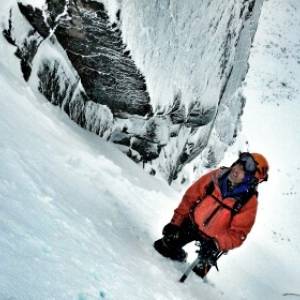Savouring the little steps in a long journey
For those of you who don't climb - stick with this - I'll try and keep the jargon to a minimum.
So after a relatively lazy restful weekend it was back to the wall today. One of the weekend's more boring tasks was typing up my training plan - so I could see that today was a 'try hard' day (I also have endurance or 'just keep trying' days & repetitive or 'do it again & again' days).
Climbing is an exceptionally diverse activity - there are different styles (Bouldering, Soloing, Leading* & more) types(Trad, Sport, Aid**) and mediums (rock, plastic, ice) - you get the picture I'm sure. Whilst in my younger days I was quite specialised - leading bold, hard Trad (so little protection, technically difficult outdoor rock, with no man made assistance) combined with indoor competitions - nowadays I'm much more of an all round generalist climber - I take a real pleasure from the fact that I enjoy all forms of climbing - from walking uphill to hanging half upside down on a 45degree boulder.
But realistically the best way to train & improve is, nowadays in the UK, indoors at a wall - most walls can replicate nearly any style of climbing (we even have an ice wall in Keswick) - and they're convenient - allowing training & recuperation intervals to be maximised.
As I work my way back towards climbing well after a long layoff & a series of injuries I'm grateful that I've access to so many astounding facilities here in the UK - lots within a short drive of home - including the Lakeland Climbing Centre - probably one of the most diverse & interesting walls in the country.
Indoor climbs follow the French Grading system - starting at 3 and rising through a series of a-b-c's - from 5 there's also an addition of + after each grade - so a typical progression would look like 5a, 5a+, 5b, 5b+, 5c, 5c+, 6a & so on. Typically a competent UK climber should be able to manage 6a - the steps between each grade are measurably difficult - so if you can only just get up a 6a - you almost certainly won't get up a 6b.
Many moons ago I regularly on-sighted (climbed first time with no prior knowledge***) 7c, but back then I was young, elastic & 10stone! Since coming back to climbing I've been static around 6c+/7a for a while - I've been aware of the lack of progression - I've blamed niggly injuries, age, interruptions (work, hmphhh) & many other diversions - but I've known. A couple of months ago, despite being a coach myself, I took the step of getting a coach I admire to do some sessions with me & we put together a plan - I've stuck to it fairly diligently - it's been in random measure - dull, annoying, frustrating - but I've also bought in to it, stuck with it and practised - a lot.
Today the wall had had new problems set - and as it was a 'try harder' day I got on the yellow route up the central line where this climber is (all the lines have 3 or 4 different routes on them identified by colour). It was significantly harder than anything I've been on recently. I took my time before hand, I ran through the drills in my head, I watched my feet & listened to the wall - and before I knew it I was at the top. 7b - not a huge grade in the scheme of things - but a measurable step forward - sure I'll probably fall (pun intended) back next session - but now I know 7b will go - I'll stick with the plan, keep chipping away - 7c suddenly doesn't seem so far away...
*Bouldering - climbing of large boulders, small cliffs - usually short number of moves, typically less than 5m, climber often lands on mats.
Solo - climbing full height cliffs completely on your own - no ropes, no safety system.
Leading - climbing as a pair (one leading, one following or seconding) with a rope clipped to types of protection (see below) so that the climber only ever falls the twice the distance from the last attachment point.
**Trad - traditional style, typically UK or big mountain climbing where the lead climber places temporary protection into natural weaknesses in the cliff - the second climber removes it. Protection is therefore transient in nature & defined by the features of the cliff/crag.
Sport - protection is gained from expansion bolts drilled into the rock & placed permanently - typically on cliffs where there are no natural weaknesses. The predominant form of continental climbing - allows far harder technical moves to be undertaken.
Aid - using the gear (of either type above) to assist the climber - thus it is used to climb rather than just protect.
***climbers can also red-point a climb - that is try & try & try again until its done.

Comments
Sign in or get an account to comment.


